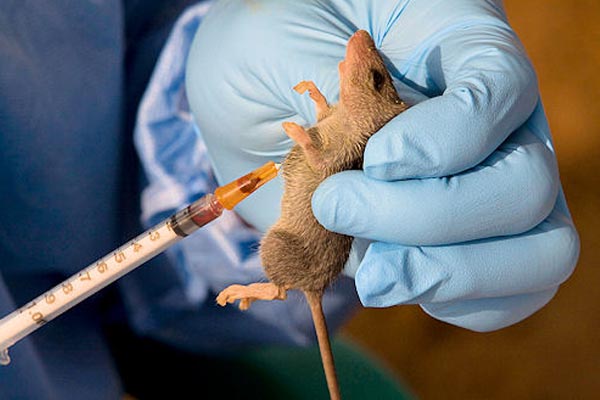The Nigeria Centre for Disease Control and Prevention (NCDC) has sounded a grim alarm, confirming a staggering 145 deaths from Lassa fever in 2025 as the country continues to battle the persistent viral hemorrhagic disease. With outbreaks reported across 18 states, and a concerning fatality rate of 18.9 percent (a rise from 17.6 percent during the same period in 2024), Nigeria faces an ongoing public health challenge that demands urgent attention and concerted action.
Escalating Numbers and Geographic Hotspots
According to the latest situation report released by the NCDC for epidemiological week 24 (June 9–15), Nigeria has recorded 766 confirmed cases out of 5,678 suspected infections this year. These figures underscore the widespread nature of the outbreak and the significant number of individuals potentially exposed to the deadly virus.
The report identifies several states as the most affected, collectively accounting for a staggering 91 percent of the confirmed cases. These high-burden states include Ondo, Bauchi, Edo, Taraba, and Ebonyi. Among these, Ondo State stands out as the epicenter of the outbreak, contributing a disproportionately high 31 percent of all confirmed cases. This concentration in specific regions highlights the need for targeted interventions and increased resource allocation to these vulnerable communities.
Persistent Challenges: Late Presentation and Unsanitary Conditions
Despite a marginal decline in new confirmed cases (down to eight from 11 the previous week), public health authorities remain deeply concerned about the alarmingly high fatality rate. This persistence of severe outcomes is primarily driven by several critical factors:
- Late Presentation of Cases: Many individuals infected with Lassa fever do not seek medical care until their symptoms have become severe. This delay significantly reduces the chances of effective treatment and increases the risk of complications and death.
- Poor Health-Seeking Behavior: A lack of awareness, misconceptions about the disease, or barriers to accessing healthcare contribute to individuals not seeking prompt medical attention, even when symptoms appear.
- Unsanitary Living Conditions: In high-burden communities, unsanitary living conditions provide ideal environments for the proliferation of rodents, which are the primary carriers of the Lassa virus. Close contact between humans and infected rodents or their excretions facilitates widespread transmission.
These underlying issues create a cycle of infection and severe outcomes, posing a significant challenge to containment efforts.
NCDC’s Multi-Faceted Response and Public Appeal
In response to the ongoing outbreak, the NCDC has implemented a multi-faceted approach to contain the spread and mitigate its impact. These efforts include:
- Deployment of Rapid Response Teams: Specialized teams have been dispatched to 10 affected states to provide immediate support, conduct investigations, and assist with case management.
- Risk Communication: Extensive public awareness campaigns are being conducted to educate communities about Lassa fever, its symptoms, prevention methods, and the importance of early reporting.
- Environmental Sanitation Campaigns: Initiatives promoting improved hygiene and environmental sanitation are crucial to reducing rodent populations and minimizing human exposure to the virus.
- Training of Health Workers: Healthcare professionals in high-risk areas are receiving specialized training to enhance their capacity for early diagnosis, effective case management, and infection prevention and control.
Recognizing the ongoing nature of the threat, the NCDC has de-escalated its Incident Management System to an “alert mode,” integrating Lassa fever messages into wider disease awareness campaigns to maintain public vigilance.
The agency has issued a strong appeal to the public, urging Nigerians to:
- Avoid Contact with Rodents: This is paramount, as the disease is primarily transmitted through contact with infected rats or their urine and faeces.
- Seek Prompt Medical Care: At the first sign of symptoms such as fever, headache, or bleeding, individuals are advised to immediately visit designated treatment centers.
- Maintain Hygiene: Emphasizing the importance of proper personal and environmental hygiene, including safe food storage.
- Report Symptoms Early: Early detection and treatment are critical for improving patient outcomes and preventing further spread.
The NCDC encourages the public to follow its advisories and utilize the toll-free line 6232 for inquiries, ensuring easy access to vital information and assistance.
Understanding Lassa Fever: Transmission and Symptoms
Lassa fever is a viral hemorrhagic disease caused by the Lassa virus. It is primarily transmitted to humans through contact with food or household items contaminated with the urine or faeces of infected Mastomys rats (the “multimammate rat”). Person-to-person transmission can also occur through direct contact with the blood, urine, faeces, or other bodily fluids of an infected person, or through contaminated objects and infected medical equipment.
Symptoms typically appear 1-3 weeks after exposure and can range from mild to severe. Initial symptoms often include:
- Fever
- Sore throat
- Headache
- Generalized muscle pain
- Vomiting and diarrhea
In severe cases, the disease can progress to cause bleeding from body openings (nose, gums, eyes), facial swelling, fluid in the lung cavity, and neurological problems. Early diagnosis and supportive care are crucial for patient survival. The NCDC’s ongoing efforts and public appeals are vital in the fight to control this endemic disease and protect Nigerian lives.


